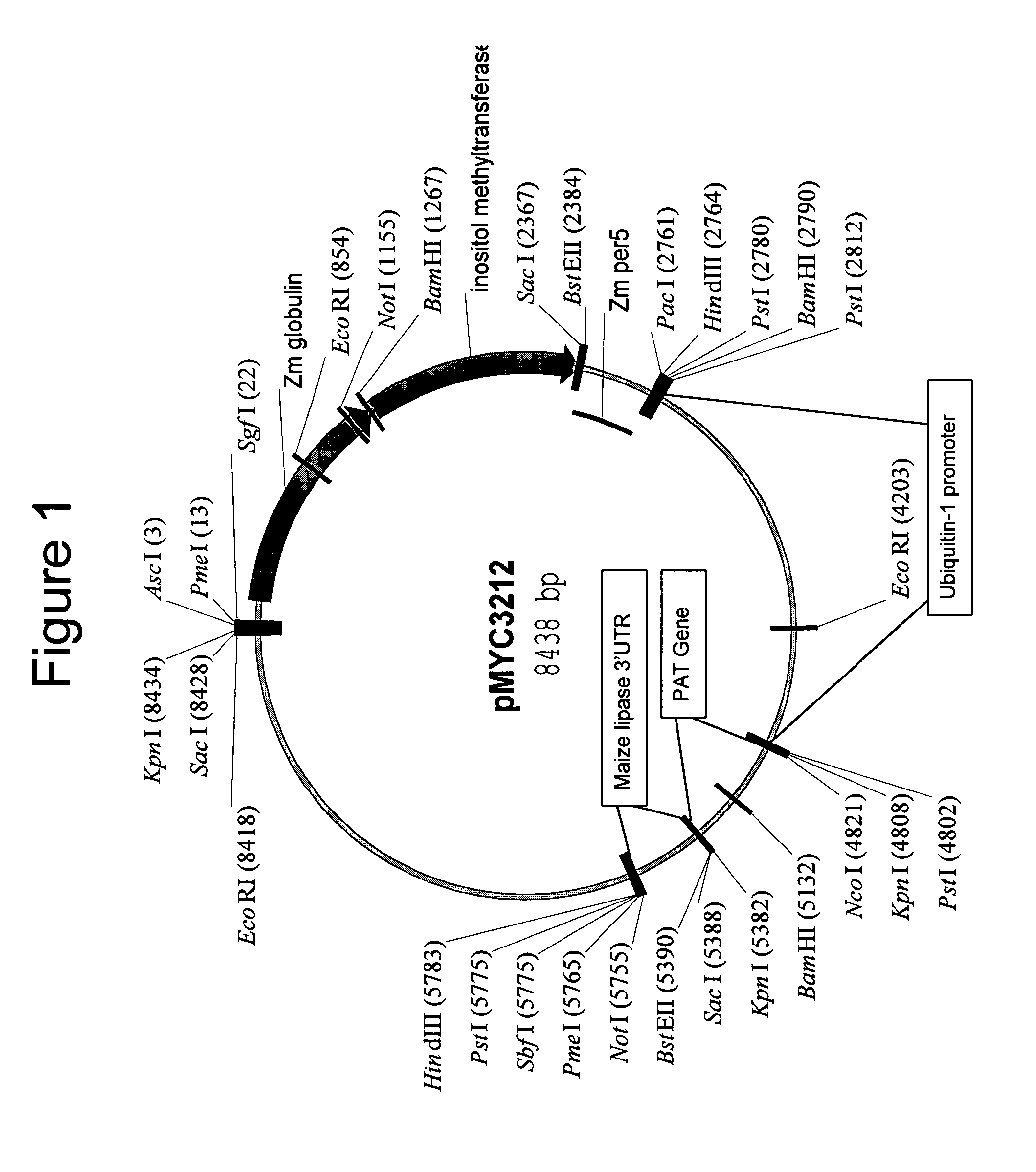Use of regulatory sequences in transgenic plants
a technology of regulatory sequences and plants, applied in the field of gene engineering of plants, can solve the problems of difficult to obtain desired expression levels and sequences that are not very well conserved
- Summary
- Abstract
- Description
- Claims
- Application Information
AI Technical Summary
Problems solved by technology
Method used
Image
Examples
example 1
Cloning of 3′UTR from the Maize Lipase Gene
[0058]Complete sequences for maize cDNAs or genomic clones were obtained from the EMBL database. Each was examined to determine if complete 3′ UTR was identified. The RNA secondary structure of the 3′ UTR sequences was analyzed using the MFOLD and PLOTFOLD subroutines of the GCG software package (Genetics Computer Group, Madison, Wis.). The MFOLD subroutine was developed by Zucker, M., Science, 244:44–52, 1989. The folding model utilized is a discrete model. There are no continuously varying parameters, instead either a hydrogen bond exists between two complementary bases or it does not. With a discrete model the mathematical tools exist to compute an optimal folding based on free-energy minimization. The program will find a number of alternate foldings within an energy increment or percentage of the optimal using the energy rules of Frier, S, Proc Natl Acad Sci, USA, 83:9373–9377, 1986. The optimal and near-optimal secondary structures can...
example 2
Plant Transformation
A. Initiation, Establishment and Maintenance of Embryogenic Maize Suspension Cultures
[0060]Greenhouse-grown plants of two maize inbred lines, Hi-II A and Hi-II B, are crossed and ears are harvested 10 to 12 days post-pollination. Immature zygotic embryos are aseptically excised and cultured on N6 based medium (Chu et al, 1975, Proc. Symp. Plant Tissue Culture, Peking Press, p43–56) plus AgNO3 (10 mg / L) plus 25 mM L-proline. To initiate suspension cultures, approximately 3 mL packed cell volume (pcv) of healthy ‘Type II’ callus originating from a single embryo is added to approximately 27 mL of H9CP+ liquid medium. H9CP+ is liquid MS medium (Murashige and Skoog, Physiol. Plant. 15: 473–497,1962) plus 2 mg / L 2,4-D, 2 mg / L NAA, 100 mg / L myo-inositol, 0.69 g / L L-proline, 200 mg / L casein hydrolysate, 30 mg / L sucrose and 5% coconut water (added at subculture) adjusted to pH 6 prior to autoclaving at 121° C. Cultures are maintained in 125 ml Erlemneyer flasks in the dar...
PUM
 Login to View More
Login to View More Abstract
Description
Claims
Application Information
 Login to View More
Login to View More - R&D
- Intellectual Property
- Life Sciences
- Materials
- Tech Scout
- Unparalleled Data Quality
- Higher Quality Content
- 60% Fewer Hallucinations
Browse by: Latest US Patents, China's latest patents, Technical Efficacy Thesaurus, Application Domain, Technology Topic, Popular Technical Reports.
© 2025 PatSnap. All rights reserved.Legal|Privacy policy|Modern Slavery Act Transparency Statement|Sitemap|About US| Contact US: help@patsnap.com

